‘Farmer Jimmy’ educates legislators on redcedar, water, and soil
By KELLY BOSTIAN
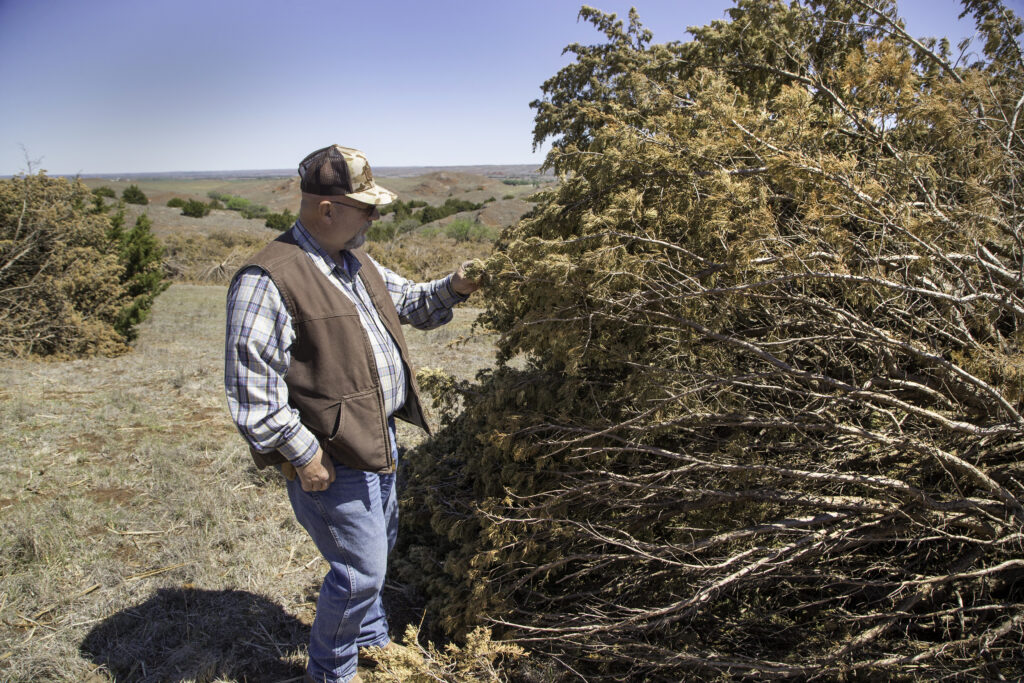
Up to $3.2 million in state funding, plus $1 million in federal conservation funds, could be directed to redcedar encroachment research if House Bill 2239 gets the votes it needs this month.
The bill has been well received in House and Senate committees, but Senate amendments were rejected in the House with a requested move to a conference committee last week.
Still, supporters have high hopes for the days ahead.
“It’s looking good,” lobbyist Don Williams said via text. “Should find out about funding for it this week.”
What started as a pair of bills that sought an aggressive hit on redcedar and saltcedar eradication has been tailored to one original request for a large-scale research project.
The bill, authored by Rep. Mike Dobrinski, R-Okeene, and Sen. Darcy Jech, R-Kingfisher, would create the Terry Peach North Canadian Watershed Restoration Act. The act directs the Oklahoma Conservation Commission to designate an area of the North Canadian River Watershed for a specific study of habitat and water flow and volume.
The Western legislators are all too familiar with issues that come with drought, including wildfire and water shortages, both of which are aggravated by the growing encroachment of redcedar and saltcedar trees that plagues many western states.
The Oklahoma Water Resources Center at Oklahoma State University studied the issue in 2017 and found that redcedar encroachment does have a negative impact on water quality and volume. The new study is meant to test that theory further.
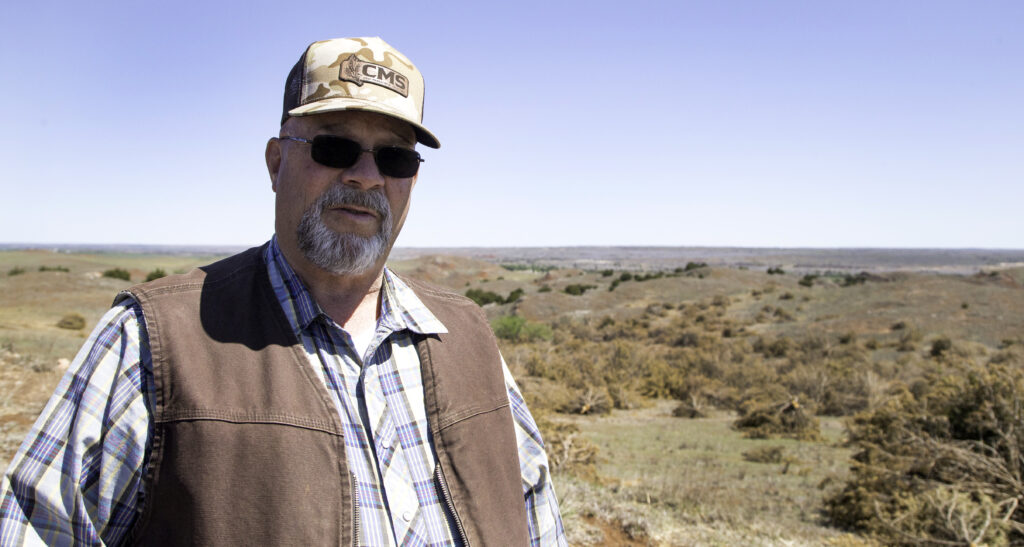
‘Farmer Jimmy’
Few know the issue as well as Dewey County rancher and farmer Jimmy Emmons, a longtime soil health advocate who actually holds a patent on the phrase, “Long Live the Soil.”
At the Emmons Farm issues with redcedar comes into plain focus. It made him the natural choice to assist with the bill, speak with legislators, and consult with the Conservation Commission on what an effective study should include. He also knows how to draw the direct line from his dried-up ponds to receding lake shorelines and hungry Oklahoma City water lines.
Above his past titles with the U.S. Department of Agriculture and Natural Resource Conservation Service, and the speaking engagements across the country he has held over the years, the state’s first prestigious Leopold Conservation Award winner says his most important title is “farmer Jimmy.”
Jimmy and Ginger Emmons, married 40 years and raised on farms 3 miles from each other near their hometown of Leedey, operate on 4,000 acres of the Gypsum Hills region along the South Canadian River. About half the land is theirs, the rest is leased.
“She does the cattle and I’m more the farmer,” he said.
His grandfather first turned the rusty ground in the 1920s. One creek flows where his grandfather ran a single walking-plow line to control the spread of a wet spot soon after settling there. An overnight 14-inch rain and the ensuing Hammon Flood of 1934 turned the row into a creek that remains to this day—when there is water.
Trees turned to mulch
Just 24 hours after a recent 2-inch rain—the first of any measurable amount in many months—the Emmons Farm lands were a rusty tapestry temporarily stained a bit darker red by an accidental splash of water.
The barley didn’t make it this season, the wheat is done for, so the ridge tops and valleys are more turquoise than rich green this season. The ponds still are dry, they have sold off cattle and still ended up grazing several areas more than what they like to see. They will over-seed the failed acreages and move cattle there to graze, he said.
On this tapestry that supports their livelihood, redcedars form dark green patches atop distant ridges with cragged dark fingers reaching out through steep ravines between the gyp hills and onto their place.
Thousands of felled redcedars create a swath of mottled brown where the drying corpses lie, awaiting the return of a mulch company with trucks and a giant wood chipper. It looks like a tornado ripped through the valley and chopped off every tree at ground level.
Parts of this area were so thick with cedars a man couldn’t push his way through on foot, he said. The landlord applied to a federal program that covered 75% of the cost of the $270-per-hour work completed. The company will profit from the mulch, which will go to oil fields and cattle stalls, Emmons said.
He expects the native little bluestem, big bluestem, and buffalo grass will come back almost immediately.
“Once they’re done in here it will look like it did back when me and Ginger were first married,” he said.
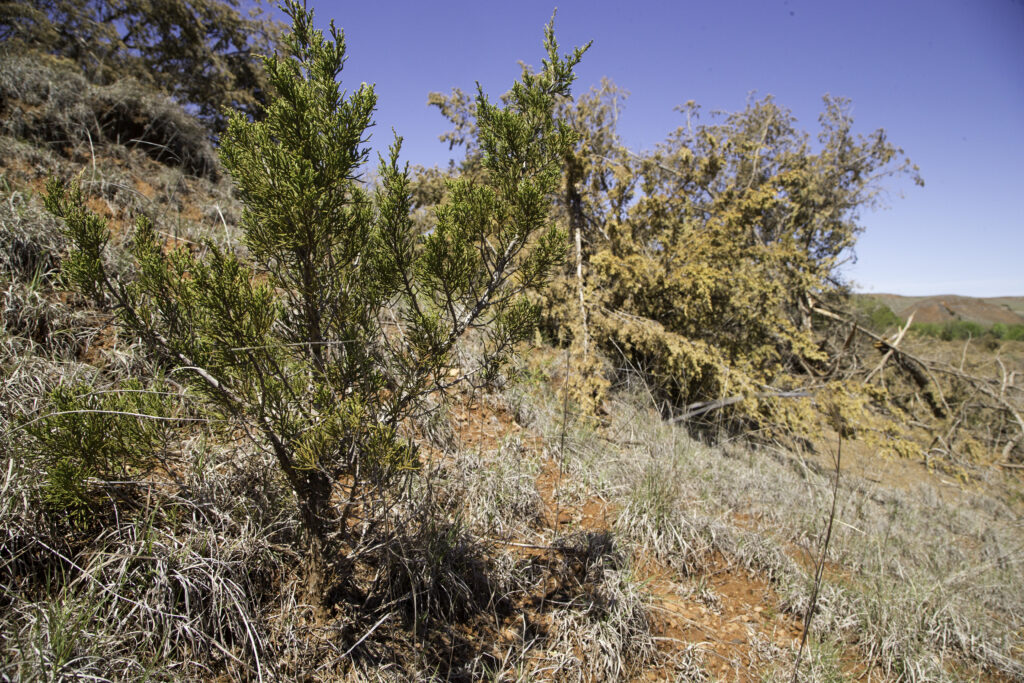
A necessary evil
He pointed to some dozen or so spindly redcedar shoots sticking up out of the deep cedar needle duff where a tree once stood. “We’ll still need to burn, though,” he said. “It’s a necessary evil.”
A ghostly gray swath looms on the eastern horizon at the farm as a reminder of that evil. It is where the Rhea Fire of 2017, fueled by redcedar, burned 400,000 acres, including several homes, and barns, and killed untold numbers of livestock.
Many ranchers in the area remain fire-shy after that experience, but burning grasses to control cedar re-growth is much easier and cheaper than burning ravines loaded up with trees, Emmons said.
Autumn through spring Emmons and his ranch hand use a skid-steer with a front-end shredding attachment to erase, acre by acre, the standing burned timber. Left standing, birds rest in those burned trees and deposit seeds and the redcedar cycle repeats. Tens of thousands of acres of burned cedar remain in Dewey County six years later.
They stop shredding in the summer to avoid starting another fire with a spark from that mulching blade, he said. But, once cleared, the grass, the soil, and the water recover.
“It gets that carbon back on the ground,” he said. “The trees, the pieces, they rot away a lot faster than people would think.”
This is just how life looks sometimes on a ranch in western Oklahoma. Drought happens and fire is always a threat, but both are exacerbated by the redcedar, he said.
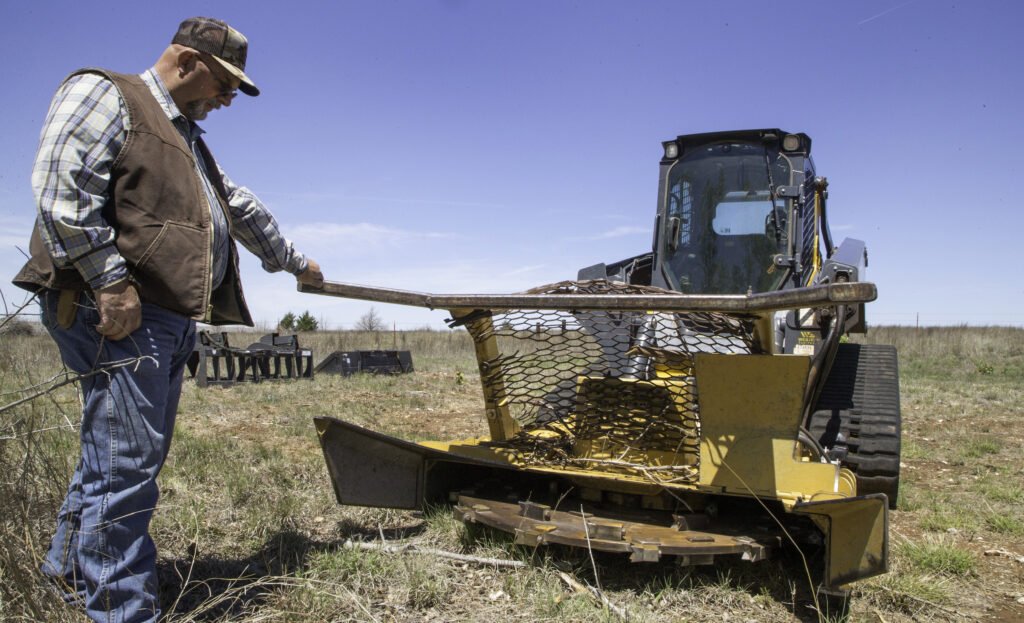
Game-changing revelation
Even with the current drought, one small spring-fed creek with bright green grasses does flow near the farm. It stands out like one piece of the tapestry untouched but it is in fact a refurbished bit that was an inspiration for Emmons.
An earlier drought had the typically soggy valley completely dry, so Emmons decided it was a good opportunity to remove the cedars from about a half-mile stretch to open up more grazing.
“Before we finished with that half mile, water started flowing in that little creek even with the drought,” he said. “We always kind of knew the redcedar used a lot of water but that was when it really hit home what a big deal it is.”
Emmons made his mark in the conservation world years ago and understands the struggle to educate people about new ideas, much less obtaining public funding to make them a reality. His latest title is Senior Vice President, Climate-Smart Programs Trust in Food with Farm Journal.
As much as he would love to see money funneled into on-the-ground work to tackle what he knows to be true. The money belongs to the people, and people want hard facts before they invest, he said.
Standing on the dam of a pond that has been dry for nearly five years he pointed up the drainage to a series of ravines choked by those dark cedar fingers.
“They want to study it. Take a spot like this and do several hundred acres and measure stream flow before and after, and then go to an area where there’s no control and they’ll prove that if you spend that $3.2 million it’s going to be worth more than $10 million or $20 million in the long run,” he said.
The issue is more than grass in dry cattle country, he said. The South Canadian that borders Emmons farm flows southeast past Oklahoma City to Lake Eufaula, and the North Canadian flows toward Canton Lake, the state’s premier walleye fishery and a water supply lake for Oklahoma City.
“There’s a lot to it and it’s all connected,” he said. “People think it’s just about grass and cattle out here. Well, that’s the first thing but this all goes downstream and it’s multiple effects on water and recreation and trouble with fires and insurance costs for everybody, it goes on and on the things it can impact. It adds up for all of us and if we don’t do something about it we’re going to lose this country.”
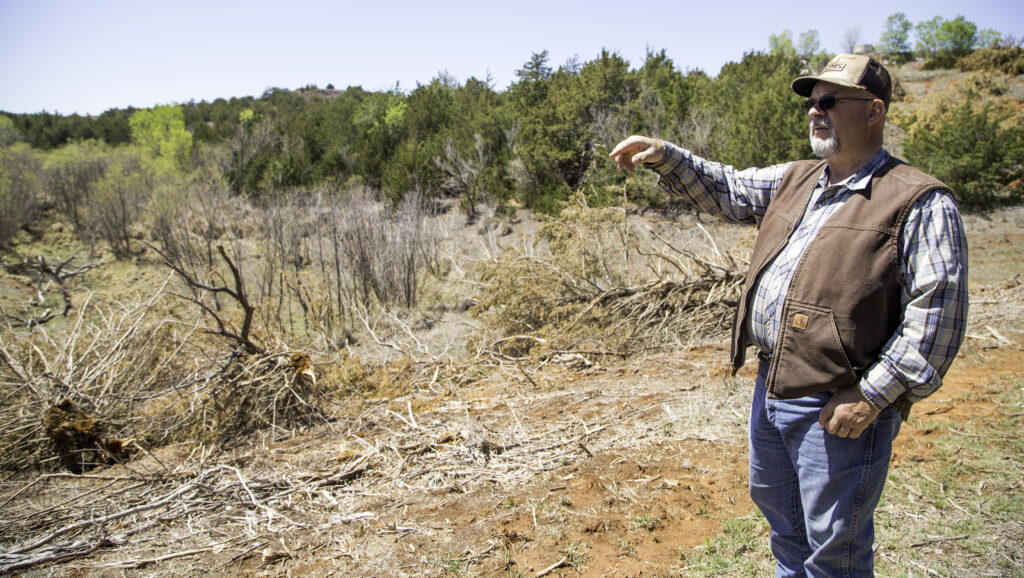
The Oklahoma Ecology Project is a nonprofit dedicated to in-depth reporting on Oklahoma’s conservation and environmental issues. Learn more at okecology.org
This story originally appeared on Medium. Click here to view this story on medium.com.
